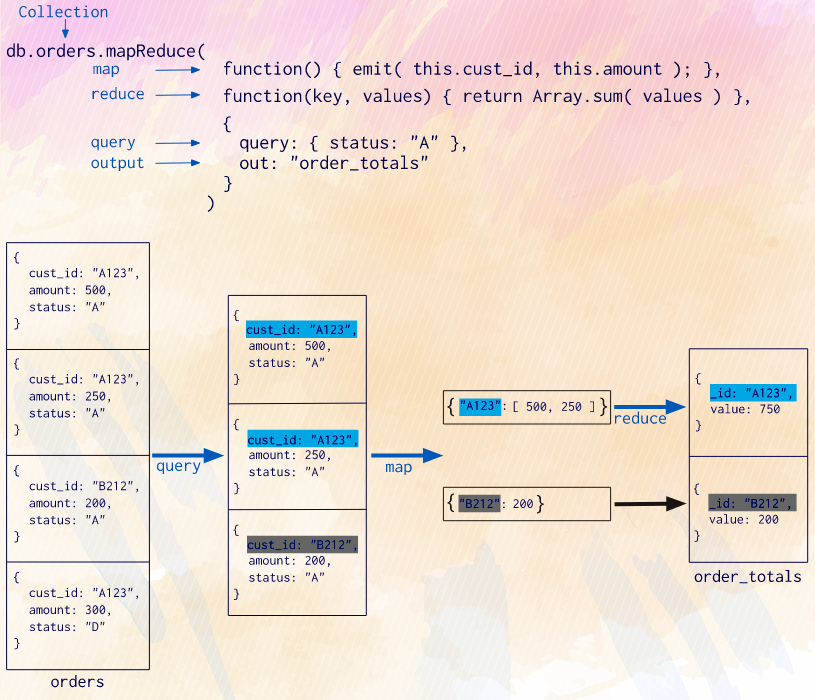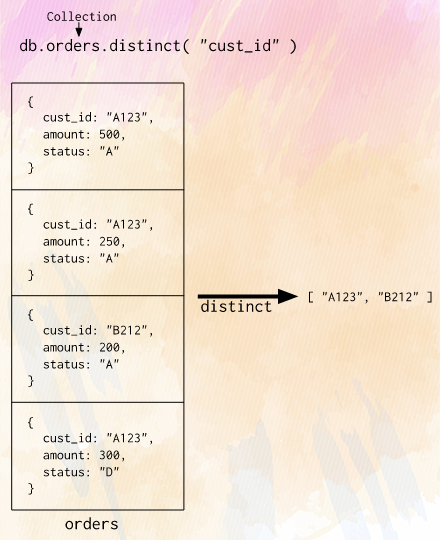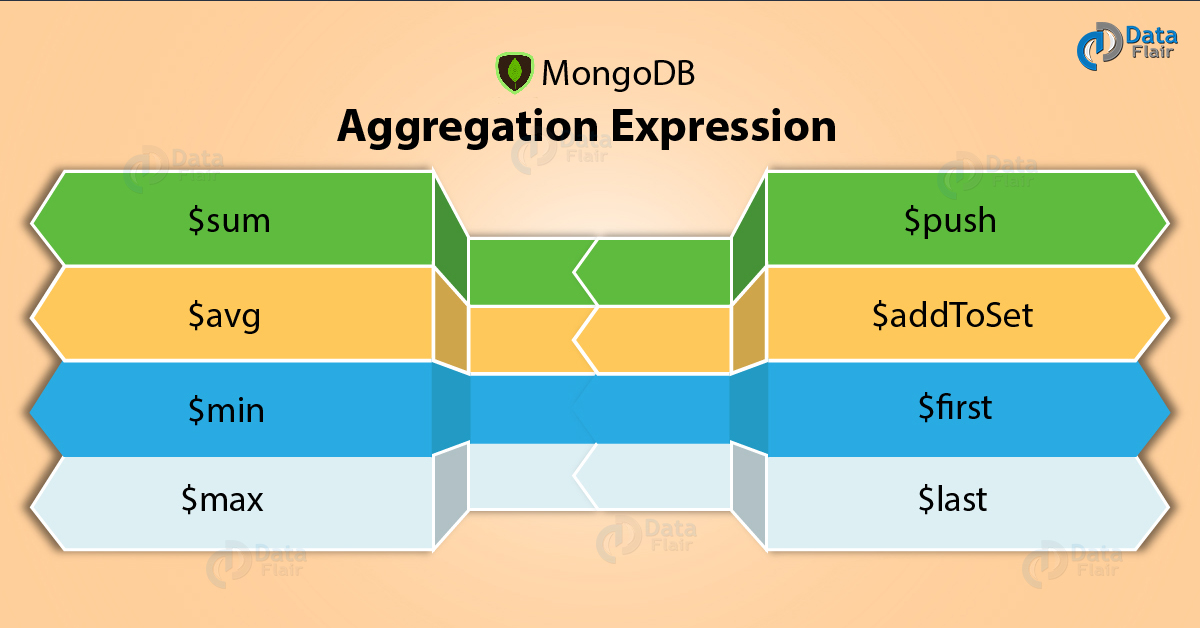MongoDB Aggregation (Types & Expression) – 7 Stages of Aggregation Pipeline
FREE Online Courses: Click, Learn, Succeed, Start Now!
Hope, you are enjoying MongoDB tutorials. The last session was all about MongoDB GridFS. Today, we will see a new term called MongoDB Aggregation, an aggregation operation, MongoDB processes the data records and returns a single computed result.
Here, we will talk about types of aggregation, expression, and stages of aggregation pipeline with examples.
So, let’s start the MongoDB Aggregation Tutorial.
What is MongoDB Aggregation?
In aggregation operation, MongoDB processes the data records and returns a single computed result. It actually groups multiple documents and then performs aggregation operation on it and after that returns a single result to the end user.
MongoDB can perform aggregation in 3 ways and they are as follows:
- Aggregation Pipeline
- Map-Reduce Function
- Single Purpose Aggregation Method
i. MongoDB Aggregation Pipeline
Aggregation process in MongoDB is modeled on the concept of data processing pipelines. Multiple documents enter the pipeline and then these documents are being transformed into aggregated results.
The operations being performed during pipeline include filter and document transformation in which they operate like queries and modify the form of output document respectively.
The pipeline method provides efficient data aggregation using other operations present in MongoDB. It can also operate on a sharded collection.
It can also use MongoDB indexes to improve its efficiency at some stages. With all this aggregation pipeline has an internal optimization phase due to which it can make this process optimal for the processor.

Technology is evolving rapidly!
Stay updated with DataFlair on WhatsApp!!
MongoDB Aggregation Pipeline Example
ii. Map-Reduce
As the name suggests it has two operations in itself, they are a map in which each document is being processed along with emitting one or more objects for each document and reduce phase in which output of map operation are being combined together.
MongoDB Map-reduce can optionally have a finalize stage in which it can do some final modifications in the output of the document. Map-Reduce uses JavaScript to perform its operations including the finalize operation.
Even though javascript provides greater flexibility than aggregation pipeline, but still it is less efficient and more complex operation as compared to the aggregation pipeline in MongoDB.
iii. Single Purpose Aggregation Operations
These operations aggregate all the documents from a single collection in MongoDB. Even though they provide simple access to common aggregation operations they lack the flexibility and capability of map-reduce and aggregation pipeline.
Stages of MongoDB Aggregation Pipeline
These are 7 stages of aggregation of Pipeline in MongoDB:
- $project
- $match
- $group
- $sort
- $skip & $limit
- $first & $last
- $unwind
i. $project
This stage is used to select certain fields from a collection. We can also add, remove or reshape a key.
Example –
db.example.aggregate([
{
$project:{
_id:1,
'dept':{$toUpper:'$name'},
'newexp':{$add:['$exp',10]}
}
}
])Here we are creating ‘dept’ from earlier ‘name’ which was in upper case. And in ‘newexp’ we are adding the experience as 10 years.
ii. $match
It is used in filtering operation and it can reduce the number of documents that are given as input to the next stage.
Example –
db.example.aggregate([
{
$match:{
name:'xyz'
}
}
])Here we are aggregating documents that have a name equal to xyz.
iii. $group
It does the work as the name says. It groups all documents based on some keys.
Example –
db.example.aggregate([
{
$group:{
_id:{'dept':'$name'},
employee_count:{$sum:10}
}
}
])iv. $sort
It is used to sort all the documents.
Example –
Here we want to group all department in ascending order and then find the count of employees.
db.example.aggregate([
{
$group:{
_id:'$name',
employee_count:{$sum:1}
}
},
{
$sort:{
_id:1
}
}
])v. $skip & $limit
Using skip we can skip forward in the list of all documents for the given limit. And using limit we can limit the number of documents we want to look at by specifying the limit as per our convenience.
Example –
db.example.aggregate([
{
$group:{
_id:'$name',
employee_count:{$sum:10}
}
},
{
$sort:{
_id:1
}
},
{
$skip:4
},
{
$limit:5
}
])
vi. $first & $last
It is used to get the first and last values in each group of documents.
Example –
db.example.aggregate([
{
$group:{
_id:'$name',
employee_count:{$sum:1},
record:{ $first:'$code'}
}
}
])vii. $unwind
We can use unwind for all documents, that are using arrays.
Example –
Let’s say that we are having a sample document:
{
a:abcdata,
b:xyzdata,
c:[a1,a2,a3]
}After this if we perform unwind operation on c then we will get 3 documents as follows:
{
a:abcdata,
b:xyzdata,
c:a1
}
{
a:abcdata,
b:xyzdata,
c:a2
}
{
a:abcdata,
b:xyzdata,
c:a3
}MongoDB Aggregation Expression
Following are the aggregation expression in MongoDB with an example:
- $sum – Sums up values from all documents in the collection.
db.examples.aggregate([{$group : {_id : "$by_student", num_dataflair : {$sum : "$likes"}}}])- $avg – Average of all documents in the collection.
db.examples.aggregate([{$group : {_id : "$by_student", num_dataflair : {$avg : "$likes"}}}])- $min – Minimum values of all documents in a collection.
db.examples.aggregate([{$group : {_id : "$by_student", num_dataflair : {$min : "$likes"}}}])- $max – Maximum values of all documents in a collection.
db.examples.aggregate([{$group : {_id : "$by_student", num_dataflair : {$max : "$likes"}}}])- $push – Inserts value in the resulting document.
db.examples.aggregate([{$group : {_id : "$by_student", url : {$push: "$url"}}}])- $addToSet – Inserts value in resulting document without creating duplicates.
db.examples.aggregate([{$group : {_id : "$by_student", url : {$addToSet : "$url"}}}])- $first – First document from the source documents according to grouping.
db.examples.aggregate([{$group : {_id : "$by_student", first_url : {$first : "$url"}}}])- $last – Last document from the source documents according to grouping.
db.examples.aggregate([{$group : {_id : "$by_student", last_url : {$last : "$url"}}}])Conclusion
Hence, we studied about Aggregation in MongoDB with types: Aggregation Pipeline, Map-Reduce Function, and Single Purpose Aggregation Method with their examples.
Along with this, we discussed the stages of aggregation pipeline and expression used in aggregation. Hope, you found it useful. Please do comment for queries.
If you are Happy with DataFlair, do not forget to make us happy with your positive feedback on Google





db.users.aggregate([
{$match:{“active”:false}},
{$group:{ _id: {“email”:”$email”,”companyName”:”$company.name”},
data: { $push: { companyName: “$company.name”,”companyId”:”$company._id”}
},
count: {“$sum”: 1}
}
}
,{$match: { count: {“$gt”: 1}}}
])
can i get total value of count variable which declare in data.